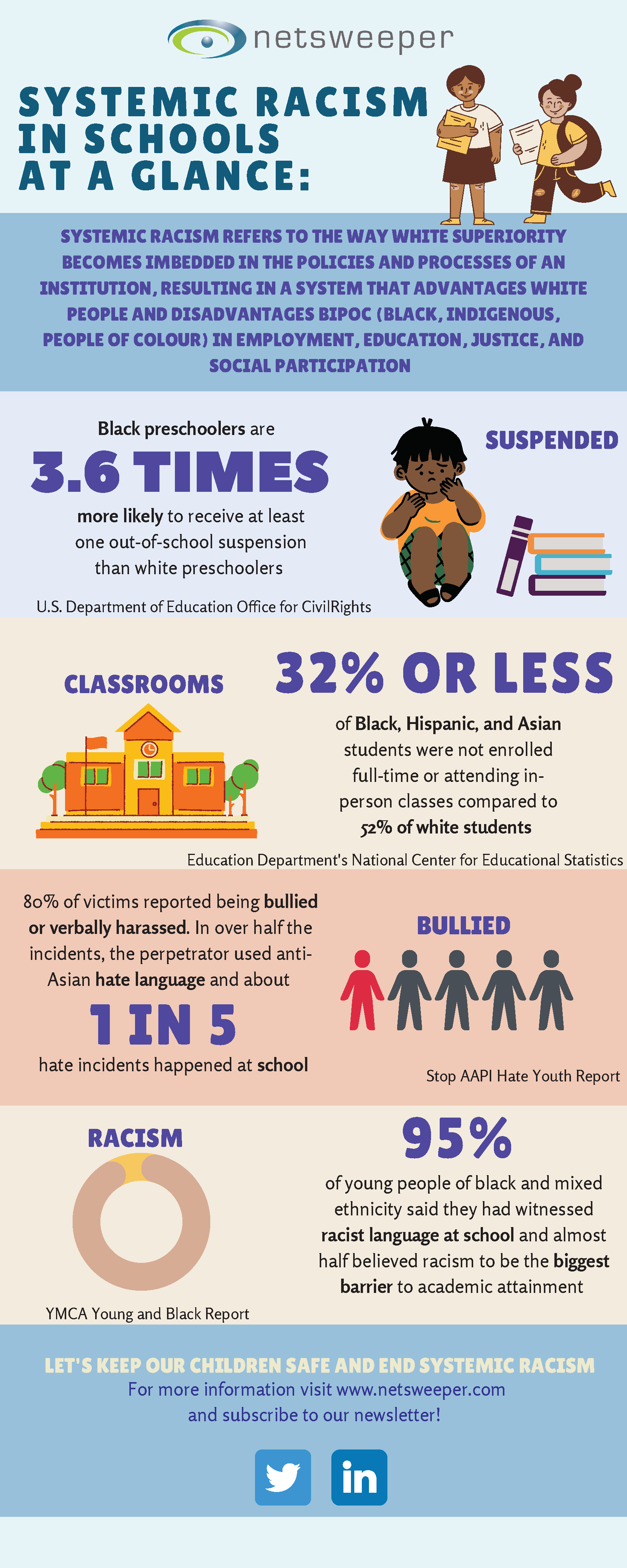The murder of George Floyd and Breonna Taylor, Islamophobic attacks against Muslims in London, Hamilton, and Edmonton, and anti-Asian hate crimes – These incidents have erupted global attention to systemic racism during the pandemic. How can we be sure our children don’t fear being targeted by their religion, race or ethnicity going back to school this fall?
No one is denying that education plays a significant role in children’s lives. It shapes worldviews, forms healthy values and beliefs, and allows children to develop healthy social interactions with others from diverse backgrounds. But let’s be honest with ourselves, the history of battling racial injustice, violence, and oppression has been going on from the early years of preschool and doesn’t seem to have a near end in sight.
The Pandemic Within the Pandemic
After a challenging year of the pandemic, kids finally get to be kids again! Come September, children will be taking the bus to school, reuniting with friends, and learning inside a classroom. Easy peasy, right? Teachers are definitely looking forward to meeting their new students in person, but there are also quite a few challenges they are anxious about upon their arrival. Children facing mental health issues, preventing bullying and even racism amongst students is just the surface of the worries that lie ahead.
A report done by Towards Race Equity in Education, reveals that compared to white and other racialized students, black students were less likely to be registered for academic courses or graduate from high school. Another report indicated that 80% of Asian American youth were being bullied and verbally harassed, with 1 in 5 of those hate incidents occurring at school. These are just a few of the many statistics that proves the degree to which these toxic beliefs and actions harm children now and in the future.

Preventing Systemic Racism in Schools
Racism in schools come in many different forms including student-teacher interaction, educational access, school discipline, etc. The need to equalize and improve the educational experience is necessary to provide students equal opportunities so they can thrive and become successful.
Implementing resources for educators is imperative to be able to teach as an anti-racist educational facility. According to a report done by Education Week, unfortunately only a mere 11% of teachers feel that they have the necessary training to do so. Here are some ways teachers can foster ways to prevent racist acts in schools:
- Teachers should frequently analyze their behaviors in the classroom: Reflect and consider situations where you may be spending more time with a specific student, if all your students are given the opportunity to equally participate in class, or if you are influenced by another teacher’s impression of a student
- Create an inclusive and diverse classroom: Use a variety of visuals in your classroom to represent different cultures and genders, collect books and toys that represent people of different color and traditions, and be open to have healthy conversations regarding racism
- Implement curriculums that acknowledge race and ethnicity: Emphasize teachings around history from different parts of the world and civil rights movements. This will not only engage students but also encourage them to learn about one another, while building respect and trust.
Challenging the Status Quo
The fight to end systemic racism is far from over. Racial inequalities and hate crimes have happened in all parts of the world for hundreds of years and continues today. These alarming actions must stop, starting with inclusive school environments. Students need to always feel safe and respected, especially during these difficult times. Educators have the power to shape the future by applying purposeful change and doing their part to ensure that students can learn together.
Click here for the link to our Twitter Poll and let us know if you’ve ever experienced being a victim of systemic racism.
Submitted by: Natasha Pande
